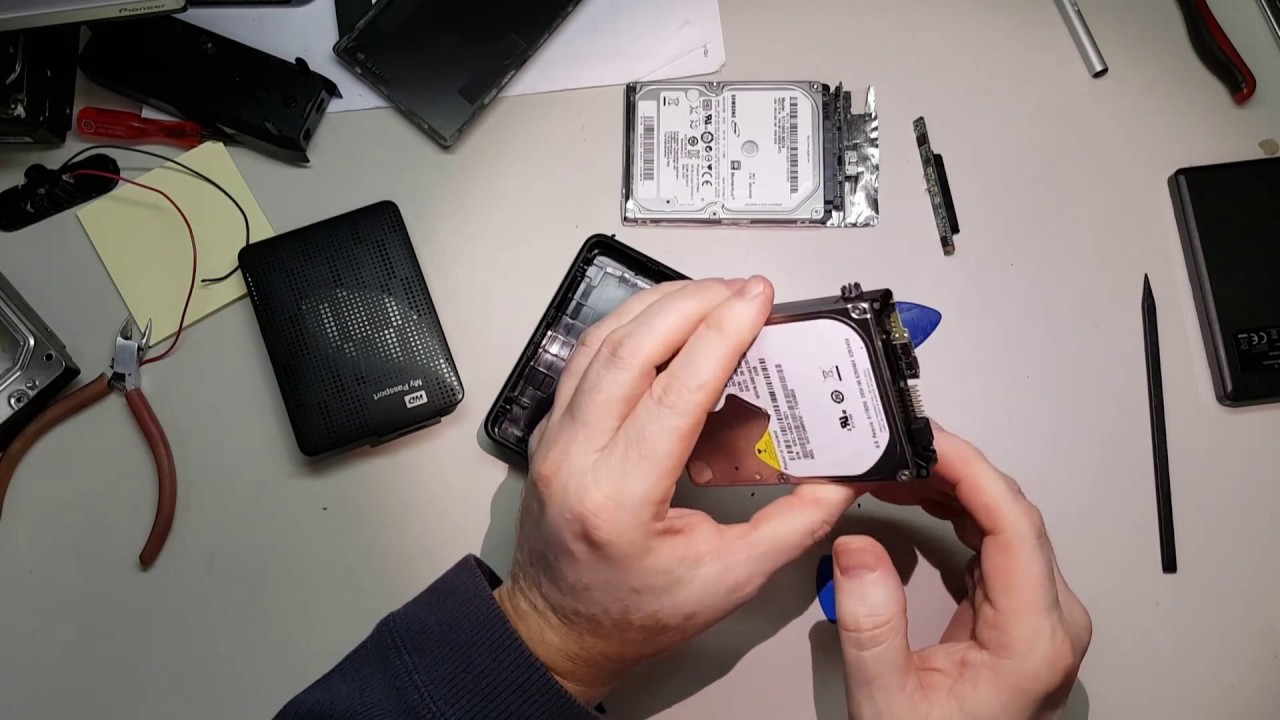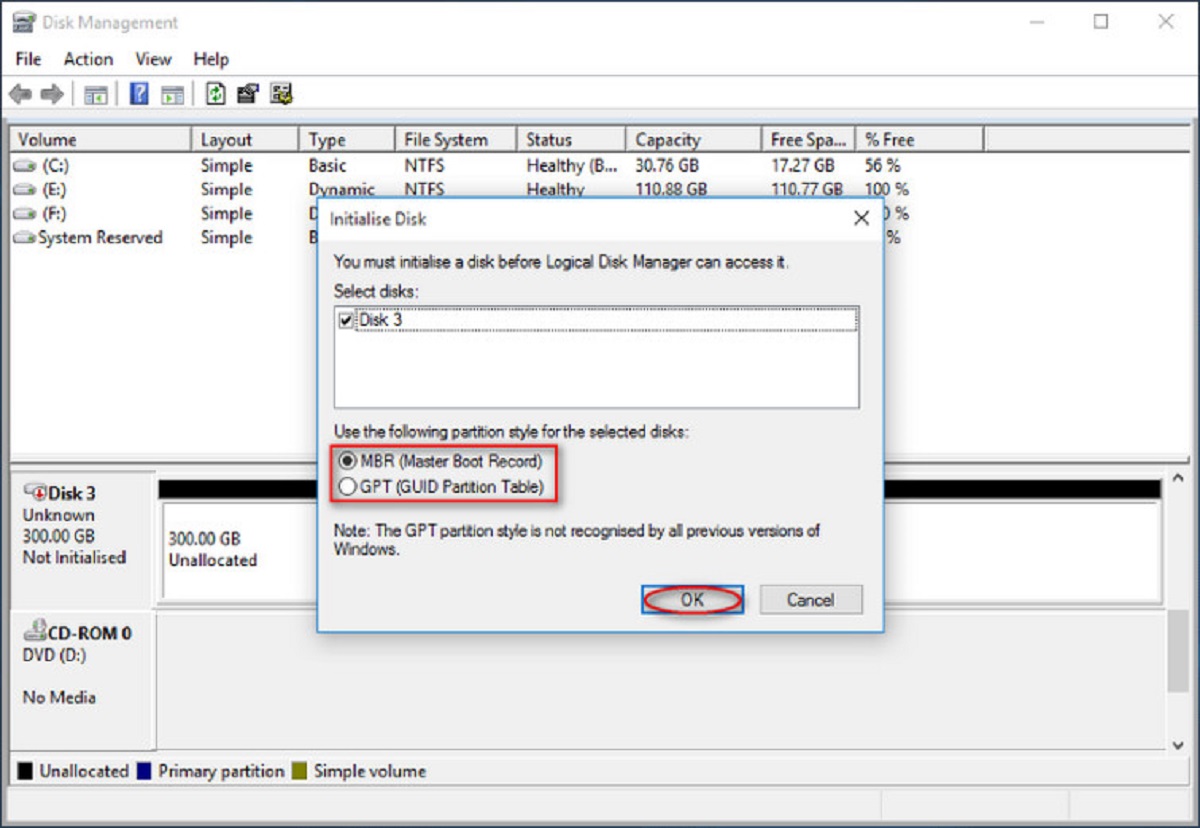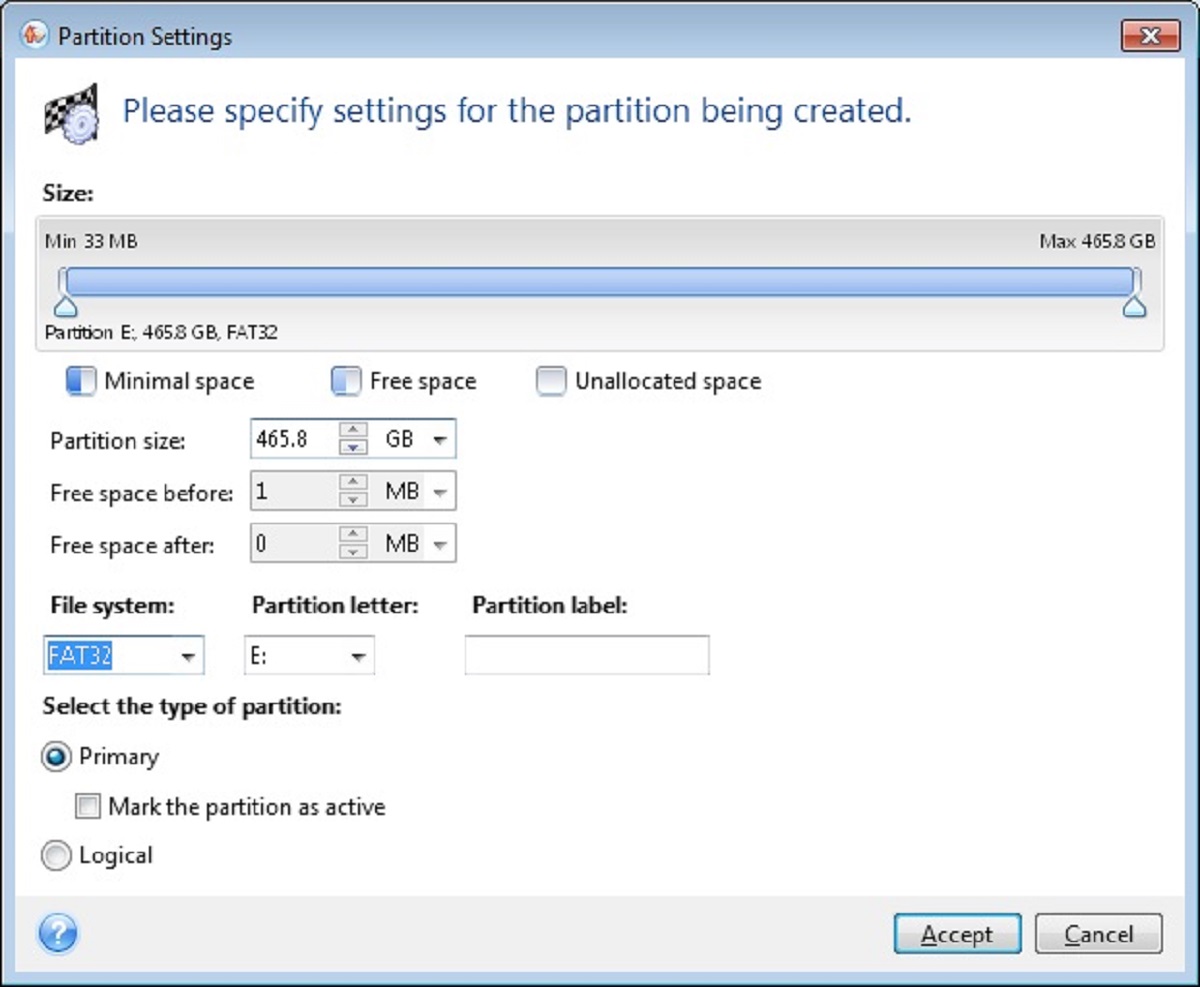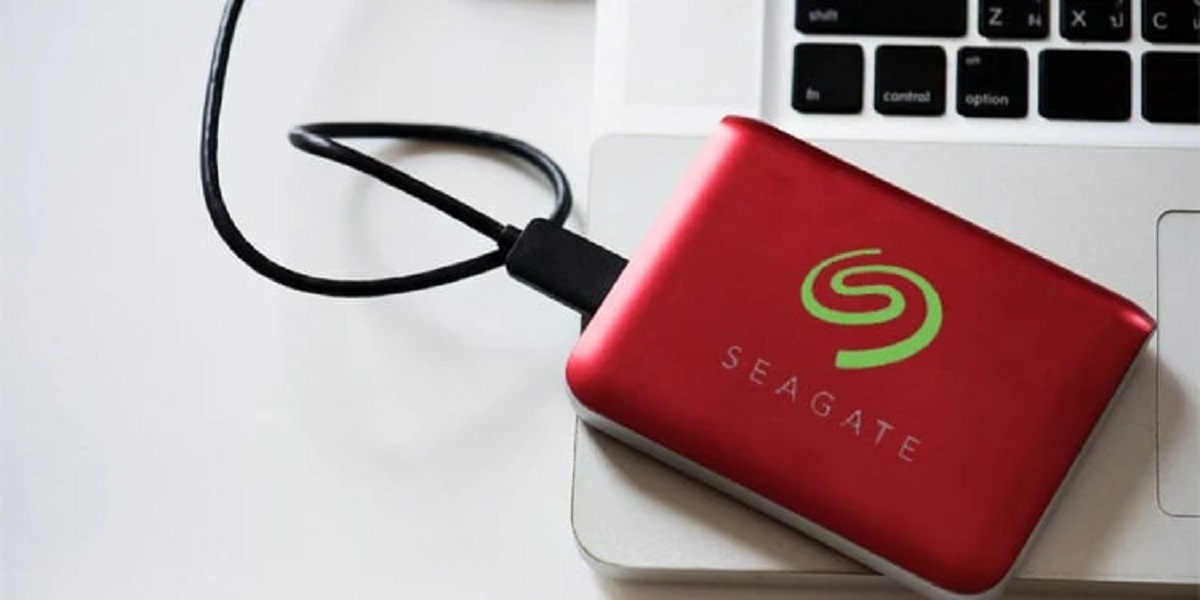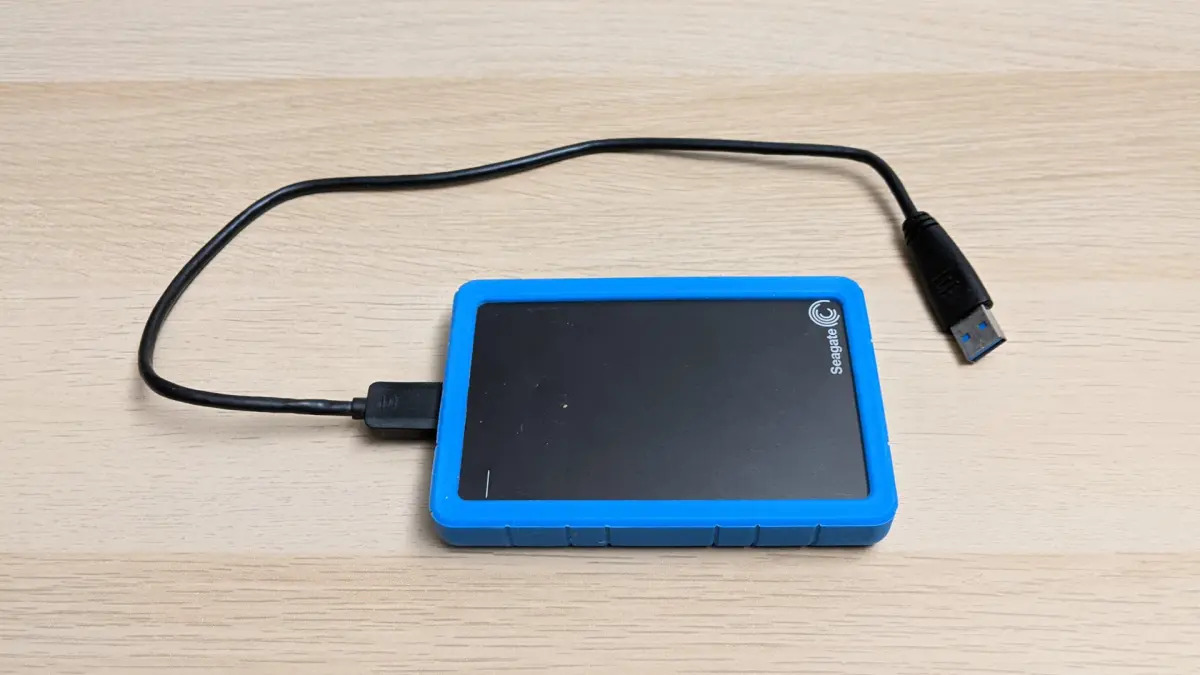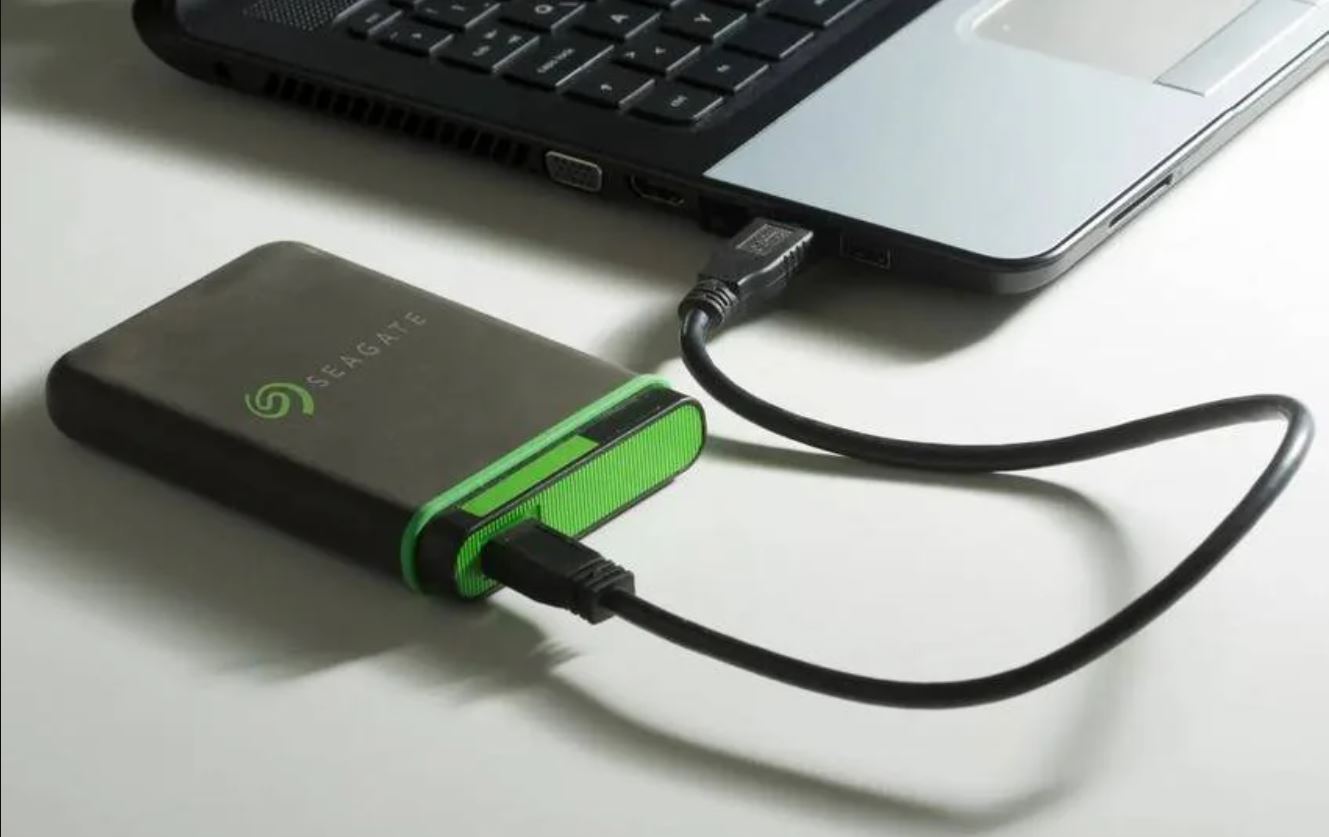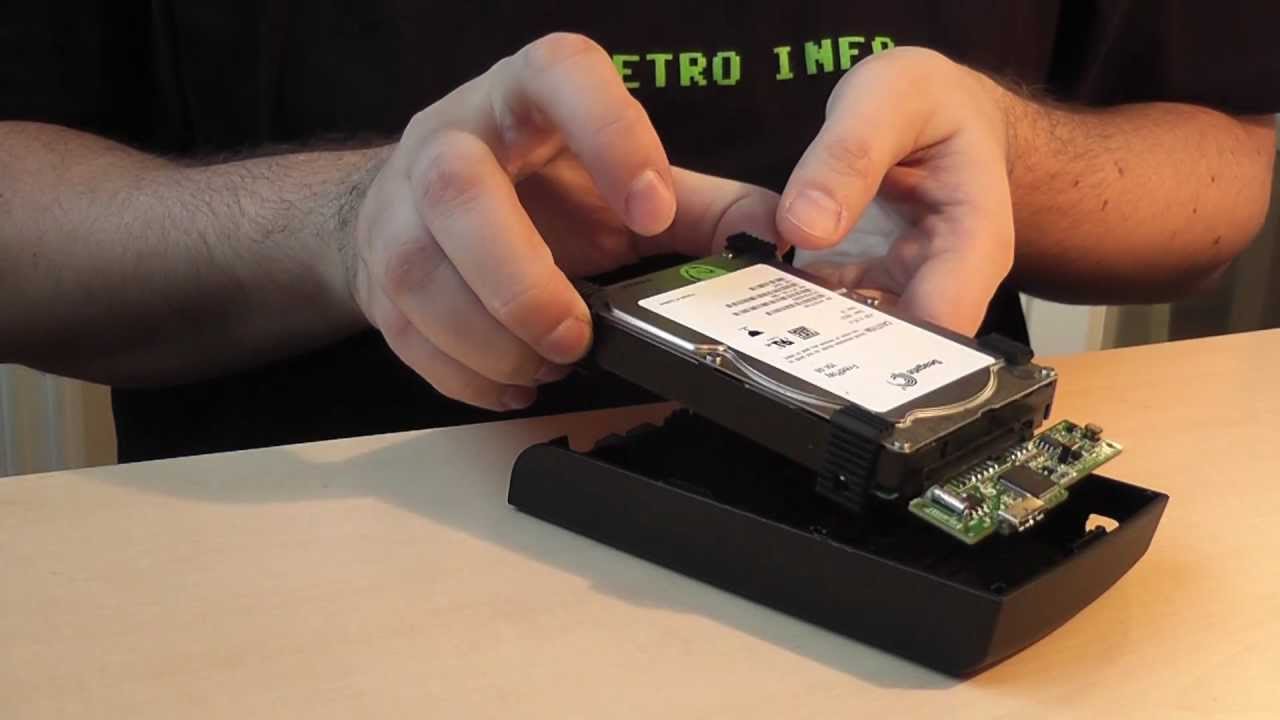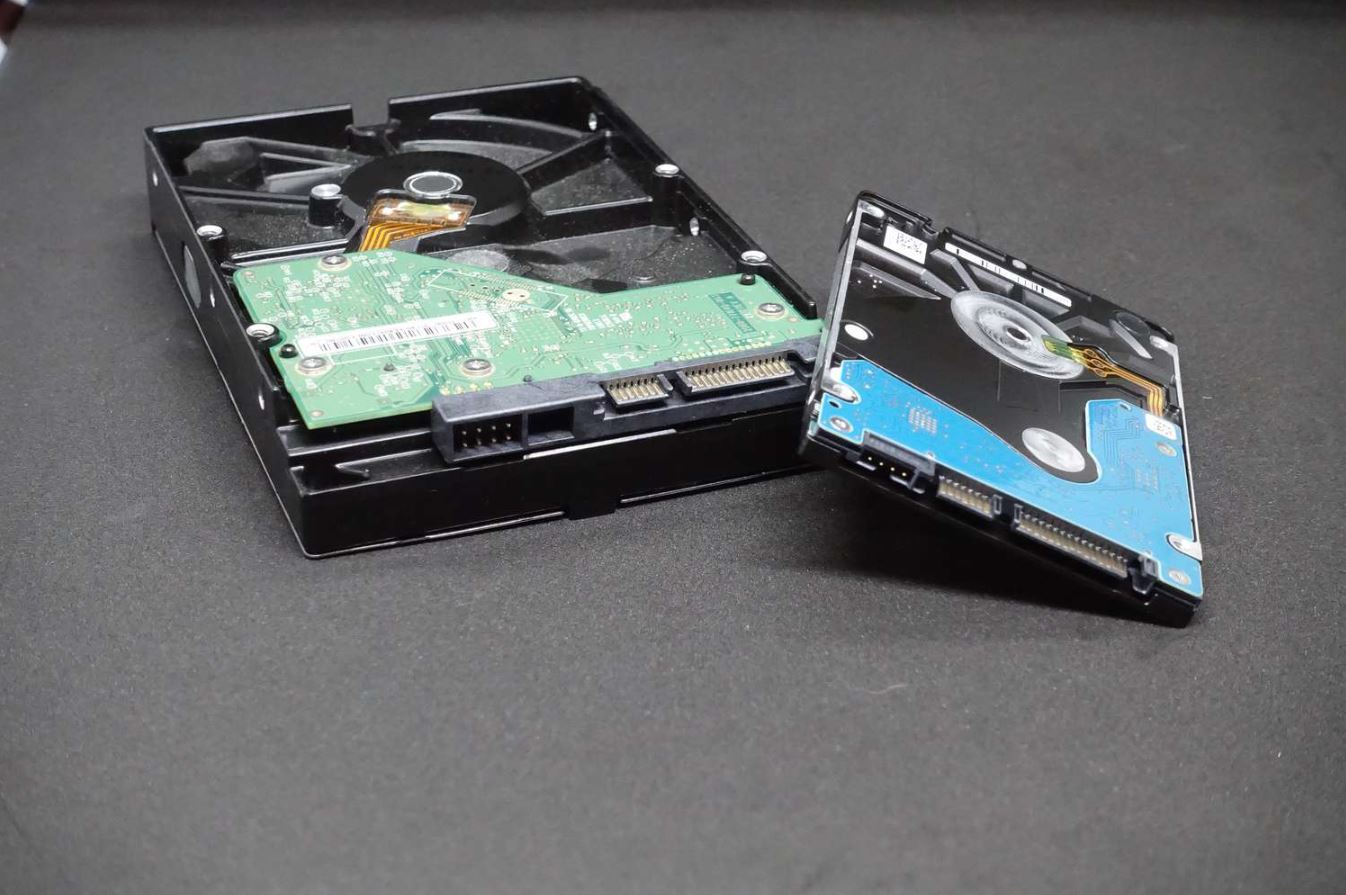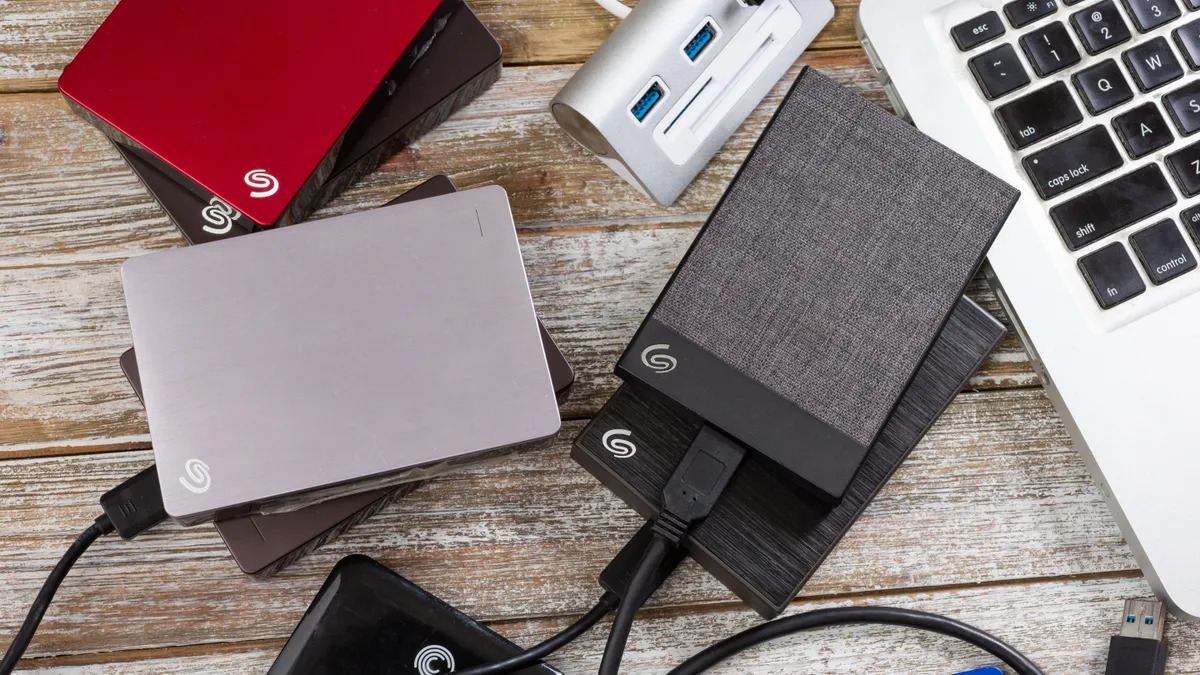Introduction
Welcome to this guide on how to fix common issues with Seagate external hard drives. Seagate is a renowned brand known for its high-quality and reliable storage solutions. However, like any electronic device, Seagate external hard drives can experience problems that may hinder your ability to access your important data.
External hard drives have become an essential tool for storing and backing up files, whether it’s documents, photos, videos, or other media. As a result, it can be frustrating when your Seagate external hard drive encounters issues such as not being recognized by your computer, slow performance, or even data loss.
Fortunately, there are several troubleshooting steps you can take to resolve these issues and get your Seagate external hard drive back up and running. In this guide, we will walk you through each step, providing detailed instructions on how to diagnose and fix common problems that may arise with your Seagate external hard drive.
It’s important to note that while this guide covers general troubleshooting steps that often resolve common issues, there may be more specific or complex problems that require advanced techniques or professional assistance. If you encounter any difficulties or are unsure about any of the steps outlined in this guide, contacting Seagate support or consulting a professional technician may be necessary.
Before we dive into the troubleshooting steps, it’s essential to back up any critical data you have on your Seagate external hard drive. While we aim to provide solutions that won’t cause data loss, there is always a risk involved when dealing with storage devices. It’s better to be safe and have a backup of your important files to avoid any potential data loss during the troubleshooting process.
Now that we have covered the basics, let’s start with the first troubleshooting step: basic checks.
Common Issues with Seagate External Hard Drives
While Seagate external hard drives are known for their reliability, there are a few common issues that users may experience. Understanding these issues can help you diagnose and resolve any problems you encounter with your Seagate external hard drive. Here are some of the most prevalent issues:
- Not recognized by the computer: One of the most common issues is when the computer fails to recognize the Seagate external hard drive. This can be due to connection problems, driver issues, or conflicts with other devices.
- Slow performance: Another issue that users may face is slow transfer speeds or overall sluggish performance. This can be frustrating and impact your productivity, especially when dealing with large files.
- Data loss or corruption: Sometimes, Seagate external hard drives may encounter issues that lead to data loss or corruption. This can occur due to power outages, sudden removal of the drive, or file system errors.
- Clicking or beeping noises: Unusual noises coming from the Seagate external hard drive, such as clicking or beeping, can indicate potential hardware problems. These noises should not be ignored, as they could signify a failing or damaged drive.
- Compatibility issues: Seagate external hard drives are designed to be compatible with various operating systems, but sometimes compatibility issues arise. This can result in the drive not working properly or experiencing limited functionality on certain systems.
It’s worth noting that while these issues are common, they are not exhaustive. There may be other specific problems that you might encounter. However, the troubleshooting steps we will discuss in the next section should help resolve the majority of issues that Seagate external hard drive users face.
Now that we have identified the common issues, let’s move on to the troubleshooting steps that can help you fix these problems and get your Seagate external hard drive back to optimal performance.
Troubleshooting Steps
When faced with issues related to your Seagate external hard drive, following a systematic approach to troubleshooting can help identify and resolve the problem effectively. Here are several troubleshooting steps to consider:
- Basic Checks: Start by checking the physical connections between your Seagate external hard drive and the computer. Ensure that the cables are securely plugged in and that there are no visible signs of damage or wear. Try connecting the drive to a different USB port or using a different USB cable to rule out any connection-related issues.
- Update Device Drivers: Outdated or malfunctioning device drivers can cause compatibility issues and prevent your computer from recognizing the Seagate external hard drive. Visit the Seagate website or the manufacturer’s website to download and install the latest drivers for your specific model.
- Check Disk Management: Access the Disk Management tool on your computer to check if the Seagate external hard drive is recognized but not assigned a drive letter. If this is the case, you can manually assign a drive letter to make the drive accessible. Alternatively, if the drive is not visible in Disk Management, it may require further troubleshooting.
- Run CHKDSK Utility: The CHKDSK utility can help identify and fix file system errors on your Seagate external hard drive. Open the Command Prompt on your computer and run the CHKDSK command with the appropriate parameters to scan and repair any issues with the drive’s file system.
- Use Seagate SeaTools: SeaTools is a diagnostic tool provided by Seagate to test and troubleshoot their hard drives. Download and install SeaTools from the Seagate website, and run the tool to check the health of your Seagate external hard drive and identify any potential issues.
- Reinstall USB Controllers: Faulty or outdated USB controllers can cause connection problems with your Seagate external hard drive. Uninstall and reinstall the USB controllers on your computer to ensure they are functioning correctly. This process varies depending on the operating system you are using.
- Disable Power Saving Settings: Some power-saving settings, especially on laptops, may interrupt the connection between your computer and the Seagate external hard drive. Disable any power-saving options that might affect USB ports to ensure a stable and uninterrupted connection.
- Perform Data Recovery: If you experience data loss or corruption on your Seagate external hard drive, consider using data recovery software to retrieve your files. There are various reputable data recovery tools available that can assist in recovering lost data from storage devices.
- Contact Seagate Support: If you have tried all the above troubleshooting steps and are still experiencing issues with your Seagate external hard drive, reach out to Seagate’s customer support for further assistance. They have a team of experts who can provide specific guidance tailored to your issue.
By following these troubleshooting steps, you can increase the chances of resolving issues with your Seagate external hard drive and regain access to your important data.
Basic Checks
When encountering issues with your Seagate external hard drive, the first step is to perform some basic checks to identify any potential connection or hardware problems. Here are a few simple checks you can do:
- Check the physical connections: Ensure that the USB cable connecting your Seagate external hard drive to your computer is securely plugged in on both ends. If you’re using an external power source for the drive, make sure it’s properly connected and powered on.
- Try a different USB port or cable: Sometimes, the USB port or cable being used may be faulty. Try connecting your Seagate external hard drive to a different USB port on your computer, or use a different USB cable if possible. This can help rule out any connection-related issues.
- Test on a different computer: If possible, connect your Seagate external hard drive to a different computer. This can help determine whether the issue lies with the drive itself or with your specific computer configuration.
- Check for physical damage: Inspect the USB port on both your computer and the Seagate external hard drive for any physical damage or bent pins. If you notice any visible damage, it may require repair or replacement.
- Restart your computer: Sometimes, a simple restart can resolve temporary software glitches or conflicts that are preventing your computer from recognizing the Seagate external hard drive. Restart your computer and check if the issue persists.
Performing these basic checks will help ensure that there are no obvious hardware or connection problems with your Seagate external hard drive. If these checks do not resolve the issue, it’s time to move on to the next troubleshooting step.
Update Device Drivers
Outdated or malfunctioning device drivers can often cause issues with your Seagate external hard drive. Updating the device drivers can help resolve compatibility problems and ensure proper communication between your computer and the drive. Here’s how you can update the device drivers for your Seagate external hard drive:
- Visit the Seagate website: Start by visiting the official Seagate website (www.seagate.com) and navigate to the Support or Downloads section.
- Find your specific external hard drive model: Look for the support page or downloads section for your specific Seagate external hard drive model. You may need to enter the model number or select your drive from a list of products.
- Download the latest drivers: Once you are on the support page for your Seagate external hard drive, locate the section for drivers or software downloads. Download the latest available drivers for your operating system.
- Install the drivers: After downloading the drivers, run the installer file and follow the on-screen instructions to install the updated drivers for your Seagate external hard drive.
- Restart your computer: Once the installation is complete, restart your computer to ensure that the updated drivers are fully applied.
Updating the device drivers should address any compatibility issues and improve the communication between your computer and the Seagate external hard drive. After updating the drivers, connect your Seagate external hard drive to your computer and check if the issue has been resolved.
If updating the device drivers does not solve the problem, it may be necessary to explore additional troubleshooting steps.
Check Disk Management
If your Seagate external hard drive is not being recognized by your computer, it is worth checking the Disk Management tool in your operating system. Disk Management allows you to manage storage devices and can help identify any issues with your Seagate external hard drive. Follow these steps to access Disk Management and troubleshoot the problem:
- Open Disk Management: In Windows, right-click on the Start menu and select “Disk Management” from the context menu. On macOS, go to “Applications,” then “Utilities,” and open “Disk Utility.”
- Check drive presence: After Disk Management or Disk Utility is open, check if your Seagate external hard drive is listed. If it is present but without a drive letter next to it, it may not be accessible to the operating system.
- Assign a drive letter (Windows only): If your Seagate external hard drive is listed in Disk Management without a drive letter, you can manually assign one. Right-click on the drive and select “Change Drive Letter and Paths.” Click “Add” and choose a letter from the drop-down menu. Click “OK” to apply the changes.
- Format the drive (if necessary): If your Seagate external hard drive appears as “Unallocated” in Disk Management, it may need to be formatted before it can be used. Right-click on the unallocated space, select “New Simple Volume,” and follow the prompts to format the drive with a file system.
- Check for errors: While in Disk Management, you can also run a check for errors on your Seagate external hard drive. Right-click on the drive and select “Properties.” In the properties window, go to the “Tools” tab and click “Check” under the “Error Checking” section. Follow the prompts to scan and repair any issues with the drive.
By checking Disk Management, you can ensure that your Seagate external hard drive is properly recognized and configured by your operating system. Assigning a drive letter or formatting the drive can resolve issues where the drive is not accessible.
If your Seagate external hard drive still does not appear in Disk Management or continues to have issues, it may be necessary to proceed to the next troubleshooting step.
Run CHKDSK Utility
If you are experiencing file system errors or other issues with your Seagate external hard drive, running the CHKDSK (Check Disk) utility can help identify and fix these problems. CHKDSK scans the drive for errors and attempts to repair them. Here’s how you can run the CHKDSK utility:
- Open Command Prompt (Windows): In Windows, open the Command Prompt by pressing Windows key + R, typing “cmd,” and pressing Enter. Alternatively, you can search for “Command Prompt” in the Start menu.
- Type the CHKDSK command: In the Command Prompt, type the command:
chkdsk [drive letter]: /f. Replace “[drive letter]” with the letter assigned to your Seagate external hard drive. For example, if your drive letter is “E,” the command would bechkdsk E: /f. - Press Enter to start the scan: Once you’ve entered the correct command, press Enter to start the CHKDSK scan. The utility will analyze the drive and attempt to fix any file system errors it encounters.
- Allow the scan to complete: Depending on the size and condition of your Seagate external hard drive, the CHKDSK scan may take some time to complete. It’s important to be patient and allow the utility to finish its work.
- Review the scan results: After completing the scan, CHKDSK will display a summary of the scan results. If any errors were found and successfully repaired, it will be mentioned in the report.
- Restart your computer: Once the CHKDSK process is complete and you have reviewed the scan results, it’s a good idea to restart your computer to ensure that any changes made by CHKDSK are fully applied.
Running the CHKDSK utility can help resolve file system errors and improve the overall health and performance of your Seagate external hard drive. However, it’s important to note that more severe hardware issues may require professional assistance or data recovery services.
If running CHKDSK does not resolve the issues with your Seagate external hard drive, it may be necessary to move on to the next troubleshooting step.
Use Seagate SeaTools
Seagate provides a diagnostic tool called SeaTools, specifically designed to test and troubleshoot Seagate hard drives, including external ones. SeaTools can help identify potential problems with your Seagate external hard drive and provide recommendations for resolving them. Here’s how you can use SeaTools to diagnose and fix issues:
- Download and install SeaTools: Visit the Seagate website and download the SeaTools software that is compatible with your operating system. Once downloaded, follow the installation instructions provided by the software.
- Connect your Seagate external hard drive: Ensure that your Seagate external hard drive is properly connected to your computer via USB or other compatible interfaces before running SeaTools.
- Launch SeaTools: Open the SeaTools application on your computer. It should detect and display the connected Seagate external hard drive.
- Select the drive to test: Choose your Seagate external hard drive from the list of available drives within the SeaTools interface. It may be listed by model number or size.
- Perform the tests: SeaTools offers various tests to diagnose different aspects of your Seagate external hard drive’s health. Start with the “Short Generic” test, which is a quick overall health check. If any issues are detected, you can then proceed to run more advanced tests, such as the “Long Generic” test or the “Fix All” option, which attempts to repair detected issues.
- Review the results: After the tests are completed, SeaTools will present a report indicating the health status of your Seagate external hard drive. If any problems are found, the report may offer suggestions for further action or provide error codes that can be used for troubleshooting.
Using SeaTools can help you diagnose and resolve issues specific to Seagate external hard drives. By running the appropriate tests and reviewing the results, you can gain insights into the health of your drive and take appropriate steps to address any identified issues.
If SeaTools does not identify any problems or if the issues persist after running the recommended tests, it may be necessary to proceed to the next troubleshooting step or seek assistance from Seagate support.
Reinstall USB Controllers
If your Seagate external hard drive is not being recognized or experiencing connection issues, reinstalling the USB controllers on your computer can help resolve the problem. USB controllers manage the communication between your computer’s USB ports and connected devices. Here’s how you can reinstall USB controllers:
- Open Device Manager: In Windows, right-click on the Start menu and select “Device Manager” from the context menu. On macOS, go to “Applications,” then “Utilities,” and open “System Information.”
- Expand “Universal Serial Bus controllers”: In Device Manager or System Information, locate and expand the “Universal Serial Bus controllers” section. This section lists the USB controllers installed on your computer.
- Uninstall USB controllers: Right-click on each USB controller listed under “Universal Serial Bus controllers” and select “Uninstall.” Confirm the uninstallation when prompted. Repeat this step for all USB controllers listed.
- Restart your computer: Once all USB controllers have been uninstalled, restart your computer. The USB controllers will be automatically reinstalled by the operating system upon reboot.
- Reconnect your Seagate external hard drive: After your computer has restarted, reconnect your Seagate external hard drive to one of the USB ports. The USB controllers should now be reinstalled, and your computer should recognize the external hard drive.
Reinstalling the USB controllers can help resolve issues related to the communication between your computer and the Seagate external hard drive. It is an effective troubleshooting step for connection problems and can help re-establish a stable connection.
If reinstalling the USB controllers does not solve the issue, there may be other factors contributing to the problem, and further troubleshooting may be required.
Disable Power Saving Settings
If you’re experiencing intermittent connection issues or interruptions with your Seagate external hard drive, disabling power-saving settings related to USB ports can often help. Power-saving settings on your computer may cause USB ports to deactivate or enter a low-power state, leading to connectivity problems. Here’s how you can disable power-saving settings for USB ports:
- Open Device Manager: In Windows, right-click on the Start menu and select “Device Manager” from the context menu. On macOS, go to “Applications,” then “Utilities,” and open “System Information.”
- Expand “Universal Serial Bus controllers”: In Device Manager or System Information, locate and expand the “Universal Serial Bus controllers” section.
- Disable power-saving settings: Right-click on each USB Root Hub listed under “Universal Serial Bus controllers” and select “Properties.” In the Properties dialog box, go to the “Power Management” tab and uncheck the option that says “Allow the computer to turn off this device to save power.” Repeat this step for all USB Root Hubs listed.
- Restart your computer: After disabling the power-saving settings for the USB Root Hubs, restart your computer to ensure that the changes take effect.
Disabling power-saving settings for USB ports can prevent them from entering low-power states or being turned off, ensuring a stable and uninterrupted connection with your Seagate external hard drive.
If disabling power-saving settings does not resolve the issue or if the problem persists, you may need to explore additional troubleshooting steps or seek further assistance.
Perform Data Recovery
If you are experiencing data loss or corruption on your Seagate external hard drive, performing data recovery may help you retrieve your important files. Data recovery is the process of restoring or retrieving files from a damaged or inaccessible storage device. Here are some steps you can take for data recovery:
- Stop using the drive: If you suspect data loss or corruption on your Seagate external hard drive, it is crucial to stop using the drive immediately. Continued use of the drive can overwrite data and make it more difficult to recover.
- Assess the situation: Evaluate the extent of the data loss and identify the specific files or folders that you need to recover. Having a clear understanding of what you’re trying to recover will help in selecting the appropriate data recovery method.
- Use data recovery software: There are various reputable data recovery software available that can assist in recovering lost data from storage devices. These tools scan the drive, locate recoverable files, and provide options to restore them. Research and select a reliable data recovery software that is compatible with your Seagate external hard drive and follow the instructions provided.
- Consult professional data recovery services: If data recovery software is unable to retrieve your important files or if your Seagate external hard drive has physical damage, you may need to seek professional data recovery services. These specialized services have advanced tools and expertise to recover data from damaged drives. Be prepared for potential costs associated with professional data recovery.
- Backup recovered files: Once you have successfully recovered your important files, it is crucial to back them up on a separate storage device. This will ensure that you have another copy of your data in case of future incidents.
Data recovery is a complex process, and success rates can vary depending on the severity of data loss or drive damage. It is important to act promptly and follow proper procedures to enhance the chances of successful data recovery.
If you are unable to recover your data using the above methods, reaching out to professional data recovery services may be the next step to explore.
Contact Seagate Support
If you have exhausted all troubleshooting steps and are still experiencing issues with your Seagate external hard drive, it may be time to seek assistance from Seagate’s customer support. Seagate provides dedicated support services to help customers resolve problems with their products. Here’s how you can contact Seagate support:
- Visit the Seagate website: Go to the Seagate official website (www.seagate.com) and navigate to the support section. Look for the “Support” or “Contact” page.
- Find the support options: On the support page, you will find various support options such as Live Chat, Phone Support, or Email Support. Choose the option that suits your preference and availability.
- Provide necessary details: When contacting Seagate support, be prepared to provide details about your Seagate external hard drive such as the model number, serial number, and a detailed description of the issue you are facing. This information will help the support team understand your situation better and provide appropriate assistance.
- Follow the instructions: Once you have connected with Seagate support, follow the instructions provided by the support representative. They may guide you through additional troubleshooting steps or provide specific instructions based on your situation.
- Keep records of your interaction: During your conversation with Seagate support, make sure to take notes and keep a record of any case numbers, reference numbers, or important details. This will be helpful for future reference or if you need to follow up on the progress of your support request.
Seagate’s customer support team is dedicated to assisting customers with their product-related issues. They have the expertise and knowledge to provide specific guidance tailored to your situation, and they can offer advanced troubleshooting techniques or help facilitate device repairs if necessary.
If you have tried all previous troubleshooting steps and are still experiencing problems with your Seagate external hard drive, contacting Seagate support is an essential step to explore and seek further assistance.
Conclusion
Dealing with issues regarding your Seagate external hard drive can be frustrating, especially when it comes to accessing important data or experiencing connectivity problems. However, by following the troubleshooting steps we have outlined in this guide, you can increase your chances of resolving these common issues and getting your Seagate external hard drive back in working order.
Throughout this guide, we have discussed various troubleshooting steps, including basic checks, updating device drivers, checking Disk Management, running the CHKDSK utility, using Seagate SeaTools, reinstalling USB controllers, disabling power-saving settings, performing data recovery, and contacting Seagate support. Each step is designed to diagnose and resolve specific problems you may encounter with your Seagate external hard drive.
Remember, it is crucial to back up your important data before proceeding with any troubleshooting steps to avoid potential data loss. While these troubleshooting steps cover common issues, it is important to note that there may be more complex or hardware-related problems that require further assistance from Seagate support or professional technicians.
If you have followed all of the steps outlined in this guide and are still unable to resolve the issues with your Seagate external hard drive, reaching out to Seagate support should be your next course of action. Their support team is equipped to provide specific guidance and further assistance tailored to your unique situation.
We hope this guide has been helpful in assisting you with troubleshooting common issues with your Seagate external hard drive. By following these steps, you can increase your chances of resolving issues and getting your external hard drive back to normal operation, allowing you to access your valuable data once again.
Remember, patience and thoroughness are key when troubleshooting. By taking the time to go through each step, you can uncover and resolve the underlying causes of the issues you are facing with your Seagate external hard drive.
Thank you for using this guide, and we hope that your Seagate external hard drive issues are successfully resolved!







